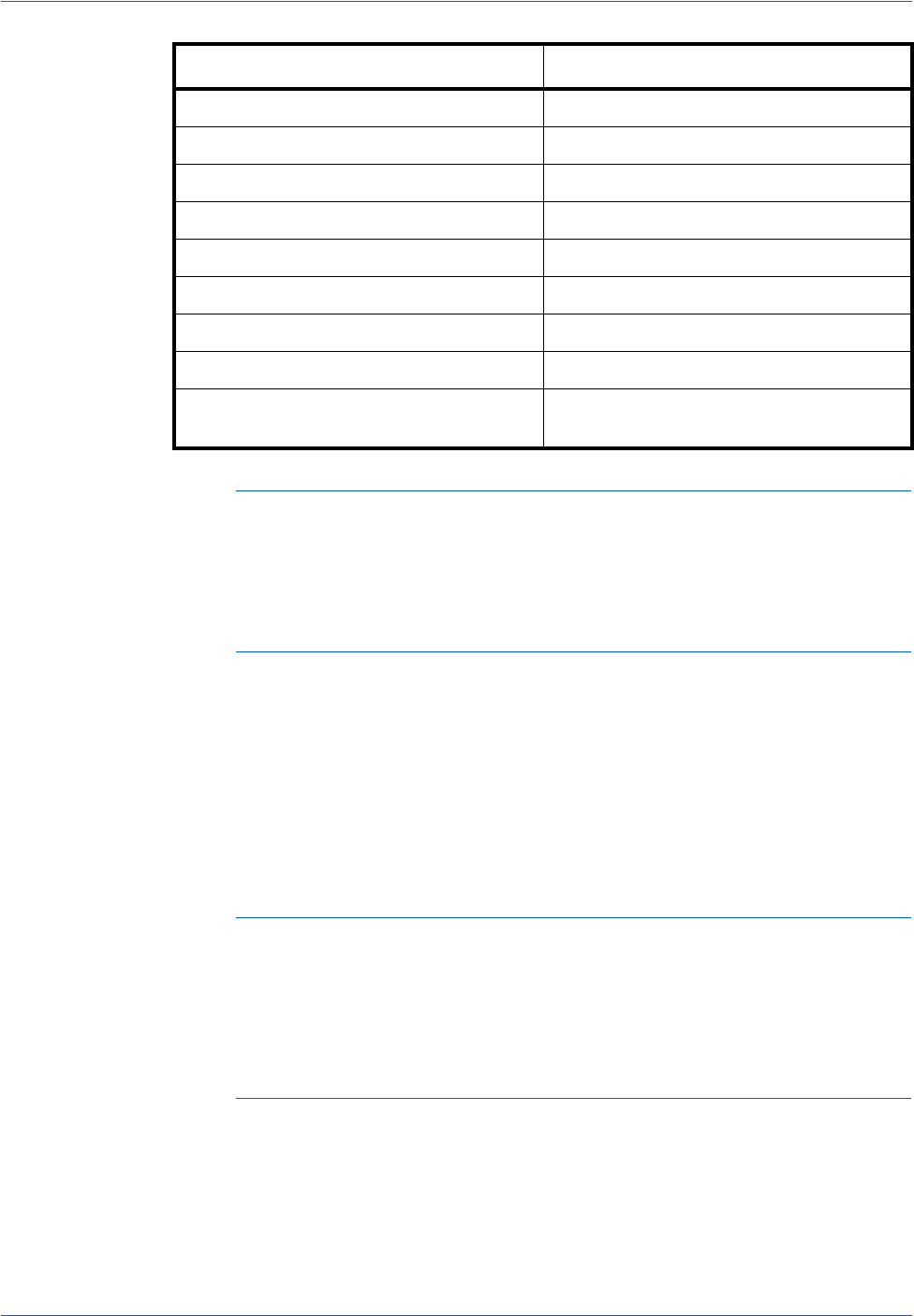
Appendix
Appendix-4 ADVANCED OPERATION GUIDE
Smoothness
The paper should have a smooth, uncoated surface. Paper with a rough or
sandy surface can cause voids in the printed output. Paper that is too
smooth can cause multiple feeding and fogging problems. (Fogging is a
gray background effect.)
Basis weight
Basis weight is the weight of paper expressed in grams per square meter
(g/m²). Paper that is too heavy or too light may cause feed errors or paper
jams as well as premature wear of the product. Uneven weight of paper,
namely uneven paper thickness may cause multiple-sheet feeding or print
quality problems such as blurring because of poor toner fusing.
The recommended basis weight is between 60 and 105 g/m² (16 and 28
lb/ream) for the cassette and between 45 and 160 g/m² (12 and 42 lb/
ream) for the multi-bypass tray.
Thickness
The paper used with the machine should be neither extremely thick nor
extremely thin. If you are having problems with paper jams, multiple feeds,
and faint printing, the paper you are using may be too thin. If you are having
problems with paper jams and blurred printing the paper may be too thick.
The correct thickness is 0.086 to 0.110 mm (3.4 to 4.3 mils).
Moisture Content
Moisture content is defined as the percent ratio of moisture to the dry mass
of the paper. Moisture can affect the paper’s appearance, feed ability, curl,
electrostatic properties, and toner fusing characteristics.
Envelope DL (110 × 220 mm) B5R (182 × 257 mm)
Envelope C5 (162 × 229 mm) A5R (148 × 210 mm)
Envelope C4 (229 × 324 mm) Folio (210 × 330 mm)
ISO B5 (176 × 250 mm) 11 × 17" (Ledger)
Comm.#10 (4
1/8 ×91/2") 8 1/2 × 14" (Legal)
Comm.#9 (3
7/8 ×87/8") 11 × 8 1/2"
Comm.#6-3/4 (3
5/8 ×61/2") 8 1/2 × 11" (Letter)
Monarch (3
7/8 ×71/2") 5 1/2 ×81/2" (Statement)
Custom: 3
7/8 ×57/8" to 11 5/8 ×17",
98 × 148 to 297 × 432 mm
Multi-Bypass Tray Cassette or Multi-Bypass Tray


















